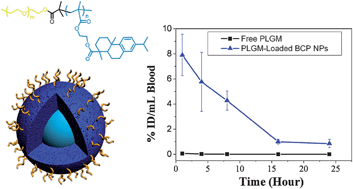Synthesis and drug delivery of novel amphiphilic block copolymers containing hydrophobic dehydroabietic moiety†
Abstract
Well-defined amphiphilic poly(ethylene glycol) and poly(dehydroabietic

* Corresponding authors
a
Laboratory of Mesoscopic Chemistry and Department of Polymer Science & Engineering, College of Chemistry & Chemical Engineering, Nanjing University, Nanjing 210093, P. R. China
E-mail:
jiangx@nju.edu.cn
b
Department of Chemistry and Biochemistry, University of South Carolina, Columbia, South Carolina 29208, USA
E-mail:
tang4@mailbox.sc.edu
Well-defined amphiphilic poly(ethylene glycol) and poly(dehydroabietic

 Please wait while we load your content...
Something went wrong. Try again?
Please wait while we load your content...
Something went wrong. Try again?
J. Wang, K. Yao, C. Wang, C. Tang and X. Jiang, J. Mater. Chem. B, 2013, 1, 2324 DOI: 10.1039/C3TB20100G
To request permission to reproduce material from this article, please go to the Copyright Clearance Center request page.
If you are an author contributing to an RSC publication, you do not need to request permission provided correct acknowledgement is given.
If you are the author of this article, you do not need to request permission to reproduce figures and diagrams provided correct acknowledgement is given. If you want to reproduce the whole article in a third-party publication (excluding your thesis/dissertation for which permission is not required) please go to the Copyright Clearance Center request page.
Read more about how to correctly acknowledge RSC content.
 Fetching data from CrossRef.
Fetching data from CrossRef.
This may take some time to load.
Loading related content
